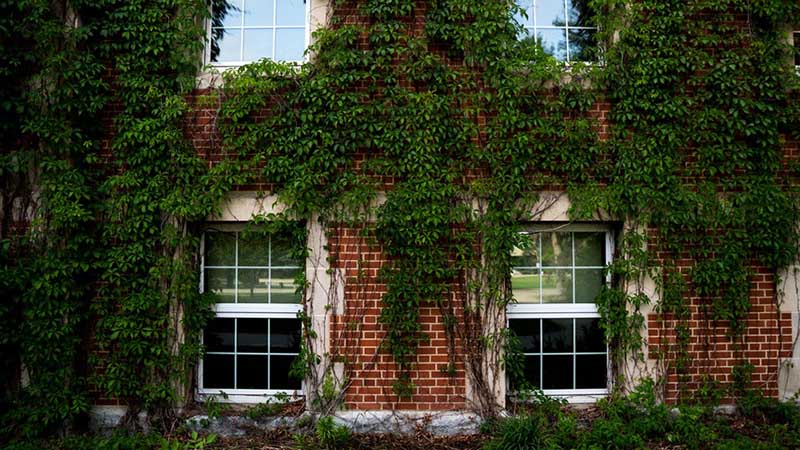Understanding How Biological Growth Affects Historical Buildings

Anyone who has explored an old or historic building has likely noticed walls, fences, and other structures covered in ivy, moss, or even shrubs. While this vegetation—referred to as biological growth—often adds character to an old building, its presence is usually a sign of moisture and can indicate possible structural damage. The key to successfully managing biological growth is understanding what it is and where it comes from.
Causes of Biological Growth
Any structure has the potential for biological growth when excess moisture is present, but it’s especially common on older buildings in shady or woodsy areas. The northern side of a building, in particular, is most at risk of developing biological growth because of its lack of sunlight. Without sunlight, moisture evaporates slowly, creating soggy, damp conditions. This creates the perfect environment for biological growth, ranging from micro-organisms to ivy, to survive and thrive.
The Problem With Biological Growth
While the plant growth itself may not be harmful, it can threaten the building’s structure or cause significant, costly damage due to water and moisture. Older buildings are particularly prone to damage from biological growth if they’ve already experienced any cracks or joint problems. In many cases, a little bit of plant growth is harmless and enchanting, but it’s important to keep it under control to prevent damage to the building. Failing to address certain types of plant growth, such as tree roots digging into the foundation, can lead to serious consequences and costly repairs. A professional should be called to assess the severity of the vegetation growth and treat the cause of the problem.
Biological Growth Treatment
Biological growth mitigation is not a “do-it-yourself” job because there are many aspects to treatment, including removing vegetation, repairing damages, and treating the root causes of moisture. A masonry restoration company can inspect the building to assess the level of growth and determine a professional treatment plan that prevents it from returning. Local wildlife and environmental regulations often make treatment complicated, but a professional will be able to use herbicides and other treatments that minimize the impact on local plants and animals.
Contact a Professional Today
The professionals at Soumar Masonry Restoration, Inc., have the knowledge and experience to mitigate biological growth while minimizing harm to the structure and surrounding ecosystem. If you’ve noticed an accumulation of vegetation or growth on internal or external surfaces of your building, let us help you develop a treatment plan before the problems get out of control. Call us today at 630-216-4422 to learn how our services can help preserve your building.
